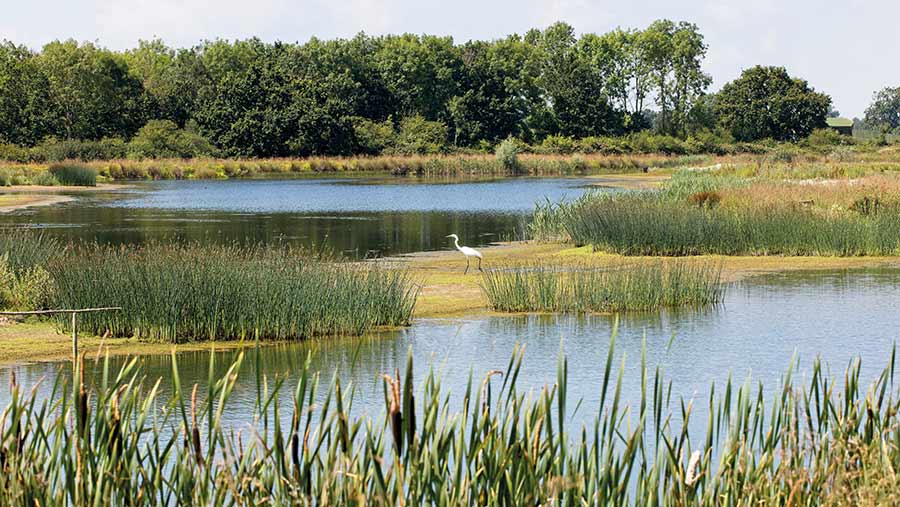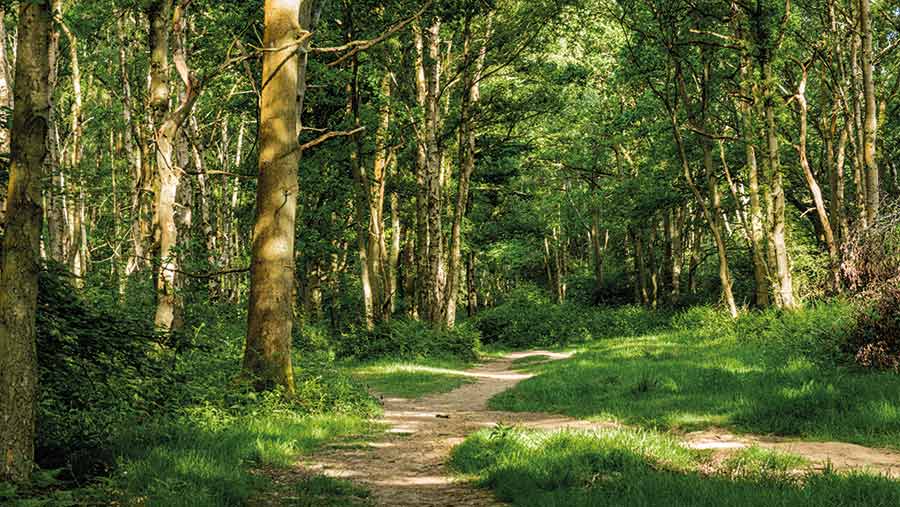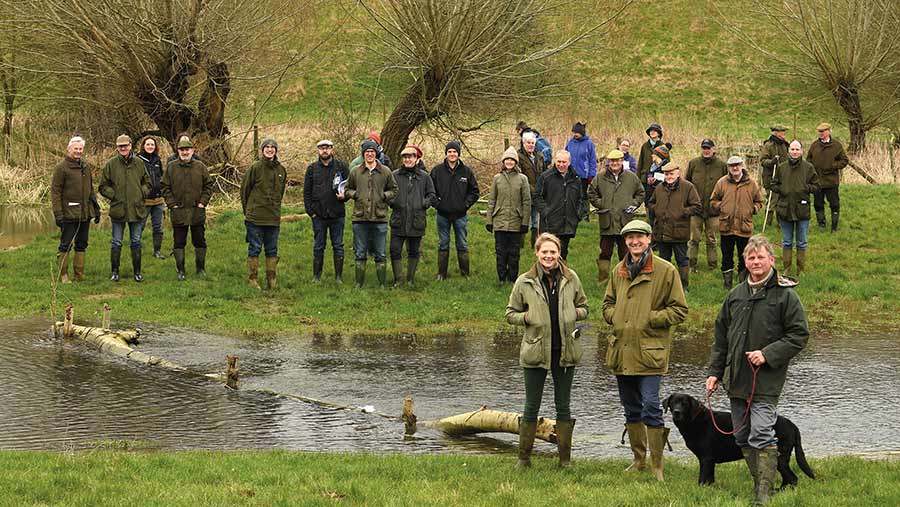Landscape Recovery scheme round two: How it works
 © Tony Mills/Adobe Stock
© Tony Mills/Adobe Stock The second round of the Landscape Recovery (LR) scheme is open for applications, with Defra setting a target to sign up a further 25 projects.
The scheme, which launched last year, is the most ambitious tier of the Environmental Land Management (ELM) scheme. It aims to reverse declines in nature, improve the landscape and tackle climate change on a large scale.
See also: Biodiversity net gain agreements – what farmers should know
What does the scheme offer?
The LR scheme will fund landscape-scale projects by offering applicants development funds initially, followed by bespoke, long-term agreements that run for 20 years or more.
The government wants to support projects that require collaboration across a large area and where the outcomes will take a long time to deliver, such as with peatland restoration or woodland creation.

© SRS Images/Adobe Stock
Who is the scheme aimed at?
The scheme is open to individual land managers and landowners, although because projects need to cover a minimum of 500ha they are most likely to involve groups of farmers and landowners working together.
Public bodies can also apply where they are working in partnership with private landowners.
However, whole holdings do not need to be entered into an agreement, so a farmer could have part of their farm under LR and other parts managed under a Sustainable Farming Incentive (SFI), Countryside Stewardship (CS) scheme agreement or in no other scheme.
What sort of payments are on offer?
The scheme is very different to SFI and CS as it does not offer a menu of standard options that Defra will pay for.
Instead, the idea is that groups explore the potential for securing private funding by selling carbon credits and other ecosystem services during the development phase of their project, and then negotiate with Defra about filling any funding gaps.
This means that every agreement will be bespoke and follow different business models.
Some projects might need capital payments to get a project off the ground; others might need ongoing maintenance payments.
What happened during the first round of the scheme?
Round one focused on projects that will deliver species recovery and river restoration.
The scheme was oversubscribed, with 51 bids submitted and 22 accepted.
However, this was a higher number than Defra’s initial target of 15 projects.
The successful applicants have now entered what is known as the development phase, where the precise details of each project will be worked up.
The projects accepted during round one cover an area of more than 40,000ha, and collectively aim to restore nearly 700km of rivers and protect and enhance 263 species, such as water vole, otter, pine marten, lapwing, great crested newt, European eel and marsh fritillary.
Are there any changes for round two?
Defra has said that this time it wants applications that will help it meet its net-zero targets, improve the condition of protected sites, or involve the creation of new habitats.
This could include landscape-scale projects creating and enhancing woodland, peatland, nature reserves; work on protected sites, such as ancient woodlands and sites of special scientific interest (SSSIs); or the recreation of wildlife-rich habitats, such as wetlands and salt marshes.
The priority themes for this round have been chosen to help the government fulfill some of the targets set out in its Environmental Improvement Plan.
During this round, Defra has introduced a food production criterion which will be used to ensure prospective projects take food production into consideration.
This means applicants will need to explain how implementing the LR project will affect food production in the project area and show what steps they plan to take to minimise any negative impact.
Lessons have also been learned from the first round of the scheme, so the application and enrolment process should be quicker and easier this time.
A 5,000ha cap that applied to projects during the first round of the scheme has also been removed.
At the same time, a cap on the project development grants has been introduced to ensure that the budget isn’t taken up by a small number of exceptionally large projects.
What is the application process?
The application window opened on 18 May and will close on 21 September 2023.
The scheme is competitive, so applications are scored against a set of criteria focused on questions such as the potential impact, feasibility and costs involved.
Only the highest-scoring projects progress to the next stage.
Once accepted into the scheme, projects first go through an enrolment process, which Defra says should take ten to 14 weeks, and involves the application being examined by the Environment Agency and Natural England.
The development phase starts after that.
Will this year be the final chance to apply?
No. A third round of the scheme will follow in 2024 and Defra expects annual rounds to continue after that.
Case study: NECFC funding application

Most projects will involve farmers working together, as this growing Cotswolds group is doing © Russell Sach
The North East Cotswolds Farmer Cluster (NECFC) successfully applied for £500,000 of funding during the first round of the Landscape Recovery (LR) scheme.
A group of about 45 farms initially applied to enter a total of 3,271ha of interconnected land parcels into the scheme.
Their objective is to restore the river and stream environment across the Evenlode catchment to improve water quality, increase biodiversity, sequester more carbon, and help prevent urban flooding downstream.
The project will seek to demonstrate how profitable food production can sit alongside the landscape-scale nature restoration in a lowland setting.
NECFC facilitator Tim Field says: “It is hugely exciting – because of the scale of the value, we can collectively deliver in terms of improvements to water quality, flood risk reduction, the provision of biodiversity net gain (BNG) and carbon capture.”
Members of the group are expected to receive a combination of public money – the level of which is still to be agreed – and blended payments from the private sector, generated through the sale of carbon credits, BNG units and the delivery of other ecosystem services.
Mr Field says the project had initially gone through a six-month enrolment process and is now in a development phase.
This involves preparing environmental baseline data across the catchment, establishing what actions should be taken on different land parcels for maximum impact, investigating what the sources of blended finance will be and working through a governance structure covering the legal and tax implications.
It was encouraging to see, says Mr Field, how word spread among farmers. Since the application had been accepted by Defra, more farmers in the area had expressed an interest in joining the project, taking the number involved to about 60 farms.
Once the two-year development period is complete, the group will enter an implementation phase with an agreement which will last for at least 20 years.
This will involve farmers committing to measures such as planting trees and hedgerows, turning floodplain arable fields to species-rich meadows and flooding areas of low-grade agriculture land to establish wetland complexes.
Mr Field says he is hugely positive about the LR scheme, but potential applicants should be aware that getting to the point where farmers sign up to the final agreement is a hugely complex process.
“It’s akin to putting together a very big Higher Tier stewardship scheme, but made a lot more complicated by the fact we are not just dealing with one funder – there are lots of funders in private natural capital markets – plus we have lots of landowners and we are pursuing a range of different environmental objectives, too.
“However, the exponential environmental benefits and financial rewards should be worth the effort.
“This is why the pump-priming we have received from the government has been so important – to enable us to get our ducks in a row.”
The NECFC has also benefited from working with excellent partner groups which have provided data and expertise.
“We’ve got great stakeholders on our doorstep – such as the Evenlode Catchment Partnership – and I believe these schemes must be developed in partnership with other organisations.
“It is too much of an undertaking for any one organisation to deliver a landscape recovery project,” says Mr Field.
The NECFC farmer cluster is showcasing its Landscape Recovery project at a session at the Groundswell event on 28 June.
